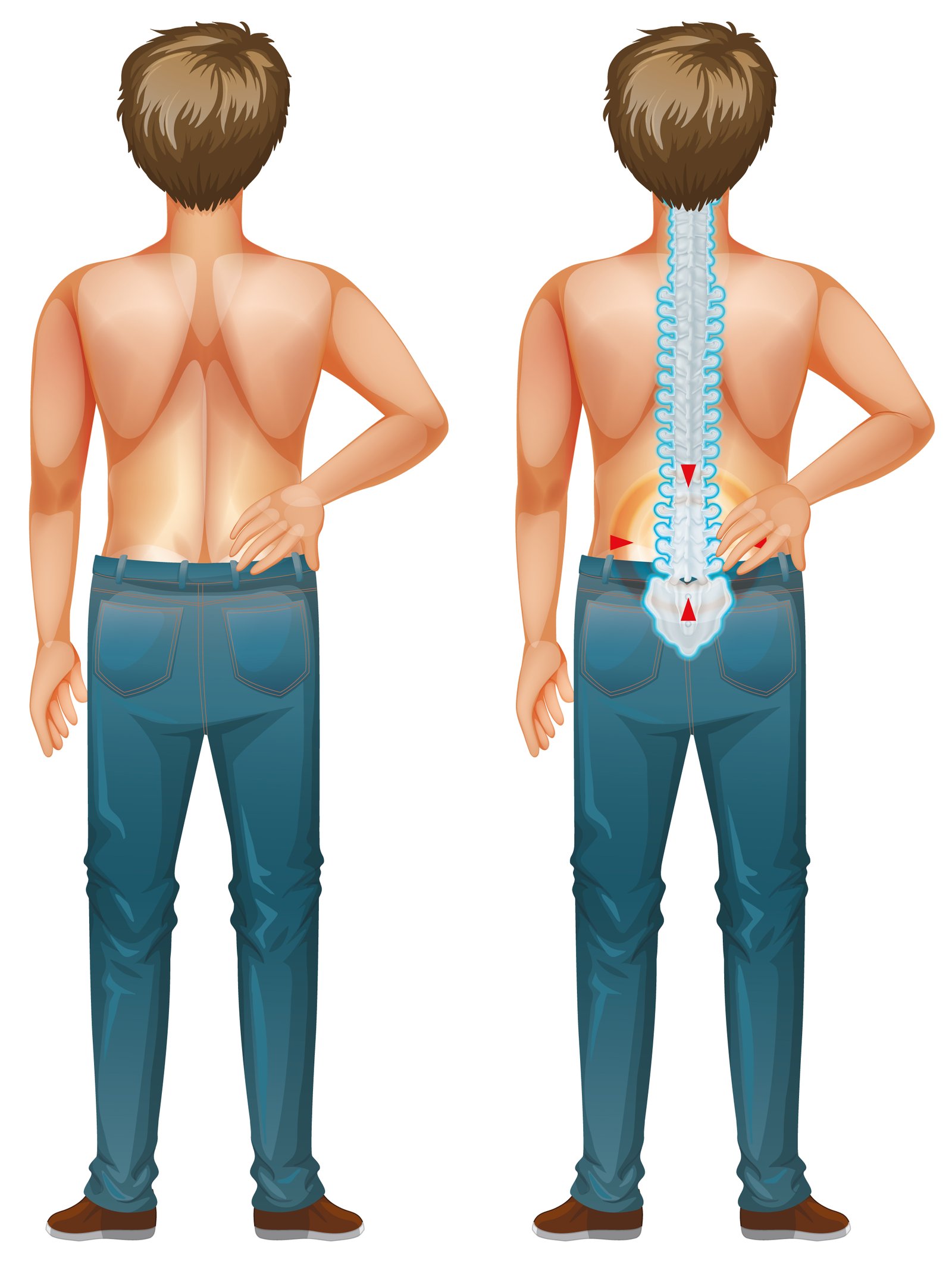Back Pain

What is Back pain ?
Back pain is one of the most common medical problems. It can range from a dull, constant ache to a sudden, sharp pain. Sometimes it can come on suddenly from an accident, a fall, or lifting something heavy, or it can develop slowly because of age related degenerative changes to the spine. In some cases, inflammatory disorders or other medical conditions cause back pain. Treatment varies depending on the cause and symptoms.
Fortunately, measures can help prevent or relieve most back pain episodes, especially for people younger than age 60. If prevention fails, simple home treatment and using the body correctly often will heal the back within a few weeks. Surgery is rarely needed to treat back pain.
Symptoms
Back pain can range from a muscle aching to a shooting, burning or stabbing sensation. Also, the pain can radiate down a leg. Bending, twisting, lifting, standing or walking can make it worse. Most back pain gradually improves with home treatment and self-care, usually within a few weeks. Contact your doctor for back pain that:
- Lasts longer than a few weeks
- Is severe and doesn’t improve with rest
- Spreads down one or both legs, especially if the pain goes below the knee
- Causes weakness, numbness or tingling in one or both legs
- Is paired with unexplained weight loss
Causes
Back pain often develops without a cause that shows up in a test or imaging study. Conditions commonly linked to back pain include:
- Muscle or ligament strain.Repeated heavy lifting or a sudden awkward movement can strain back muscles and spinal ligaments. For people in poor physical condition, constant strain on the back can cause painful muscle spasms.
- Bulging or ruptured disks.Disks act as cushions between the bones in the spine. The soft material inside a disk can bulge or rupture and press on a nerve. However, a bulging or ruptured disk might not cause back pain. Disk disease is often found on spine X-rays, CT scans or MRIs done for another reason.
- Osteoarthritis can affect the lower back. In some cases, arthritis in the spine can lead to a narrowing of the space around the spinal cord, a condition called spinal stenosis.
- The spine’s vertebrae can develop painful breaks if the bones become porous and brittle.
Investigation
One or more of these tests might help pinpoint the cause of the back pain:
- X-ray.These images show arthritis or broken bones. These images alone won’t show problems with the spinal cord, muscles, nerves or disks.
- MRI or CT scans.These scans generate images that can reveal herniated disks or problems with bones, muscles, tissue, tendons, nerves, ligaments and blood vessels.
- Blood tests.These can help determine whether an infection or other condition might be causing pain.
- Nerve studies.Electromyography (EMG) measures the electrical impulses produced by the nerves and how the muscles respond to them. This test can confirm pressure on the nerves caused by herniated disks or narrowing of the spinal canal (spinal stenosis).
Treatment
Yoga involves specific poses, movements, and breathing exercises. An osteopath specializes in treating the skeleton and muscles.
Medication: Back pain that does not respond well to OTC painkillers may require a prescription NSAID. Codeine or hydrocodone, which are narcotics, may be prescribed for short periods.
Surgery: Surgery for back pain is very rare. If a patient has a herniated disk surgery may be an option, especially if there is persistent pain and nerve compression which can lead to muscle weakness.
Prevention
To keep the back healthy and strong:
- Regular low-impact aerobic activities those that don’t strain or jolt the back can increase strength and endurance in the back and allow the muscles to work better. Walking, bicycling and swimming are good choices.
- Build muscle strength and flexibility.Abdominal and back muscle exercises, which strengthen the core, help condition these muscles so that they work together to support the back.
- Maintain a healthy weight.Being overweight strains back muscles.
- Quit smoking.Smoking increases the risk of low back pain. The risk increases with the number of cigarettes smoked per day, so quitting should help reduce this risk.